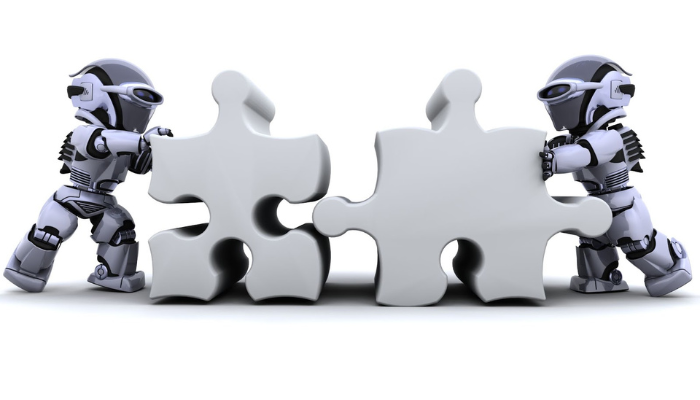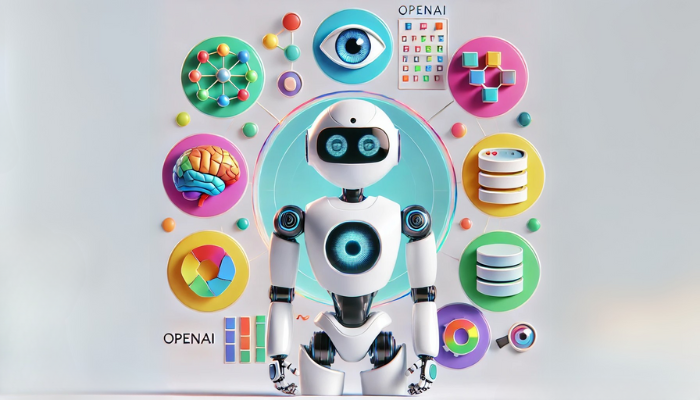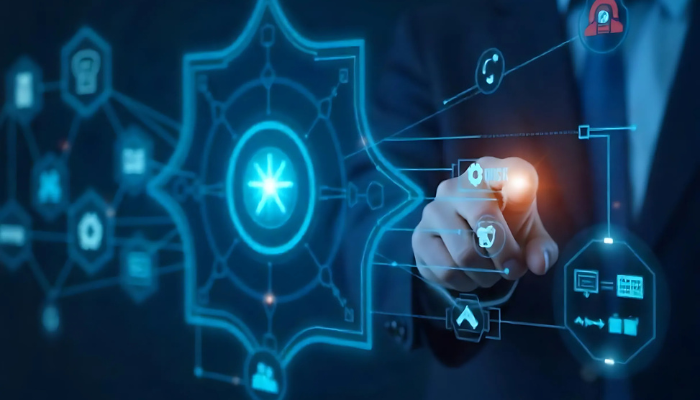AI is leveling up, and so are your options. You’re no longer choosing between basic chatbots and knowledge bases. Now, it’s about deciding between systems that retrieve information and ones that can think, plan, and act.
That’s where Agentic AI and Retrieval-Augmented Generation (RAG) come into play. RAG gives you fast, accurate answers pulled from your data. Agentic AI? It goes further, making autonomous decisions, solving problems, and adapting in real time.
And the market is taking notice. The Agentic AI market is projected to skyrocket to $47.1 billion by 2033, growing at a remarkable 44.8% year-over-year. Meanwhile, by 2030, systems like RAG and Agentic AI could automate work hours up to 30%, so that your team can easily focus on higher-value challenges and innovation.
So, how do you know which one fits your business better? This guide breaks down the Agentic AI vs RAG debate in plain terms, features, use cases, pros, and cons, so you can confidently choose the AI architecture that moves the needle for your team.
What Are Agentic AI and RAG, and How Do They Differ?
Before you can decide which AI system aligns with your goals, it’s important to understand what these technologies are built for. Agentic AI and RAG may both fall under the intelligent systems umbrella, but their underlying architectures, behaviors, and business value differ in meaningful ways.
One is designed to retrieve and respond. The other is built to reason, plan, and act. Knowing the difference isn’t just helpful, it’s essential to making the right strategic investment.
What Is Agentic AI and Why Does It Matter?
Agentic AI refers to systems designed with autonomous agents, digital entities that can independently perceive inputs, make decisions, plan tasks, and take action toward defined goals. These agents are not just reactive; they’re proactive, learning and adapting as they interact with environments, data, and tools.
In a business context, Agentic AI allows you to move from rule-based automation to goal-driven intelligence. Imagine AI that doesn’t just respond to queries but actually executes multi-step workflows, learns from outcomes, and optimizes its actions perfectly for scenarios where complexity, autonomy, and adaptability are key.
What Is RAG and How Does It Work?
Retrieval-Augmented Generation (RAG) combines two major AI capabilities:
- A retriever that searches relevant content from an external or internal knowledge base.
- A generator (usually a large language model) that uses the retrieved content to generate accurate, context-aware responses.
This hybrid approach enables your AI to stay grounded in real-time information, which is especially valuable for applications like customer support, documentation, and knowledge-based services. RAG doesn’t “know” everything; it knows where to find it.
What Makes Agentic AI Different from Traditional RAG?
While both systems aim to enhance how information is processed and delivered, their roles and capabilities diverge significantly:
- RAG is reactive—it answers questions based on what it retrieves.
- Agentic AI is active—it defines goals, makes plans, and executes actions to achieve outcomes.
Think of RAG as your well-informed assistant: fast, reliable, but dependent on prompts. Agentic AI, on the other hand, is your autonomous strategist: it understands objectives, maps the path forward, and adjusts course as needed.
What Are the Core Features of RAG?
Here’s a deep dive into the features that make RAG so impactful, and what to be aware of when considering it for your business.
1. Linear, Context-Driven Data Processing
RAG follows a two-stage linear workflow:
- First, the retriever identifies relevant chunks of text from external or internal knowledge bases.
- Then, the generator (typically based on transformer models like GPT or BERT variants) processes this content to formulate a fluent, human-like response.
This linear pipeline ensures a clear separation between retrieval and generation, which helps in auditing, refining, and debugging model behavior, key for enterprise AI
Additionally, the linear structure simplifies system monitoring and integration into existing knowledge management platforms, making RAG easier to operationalize at scale.
2. External Knowledge Integration
What sets RAG apart from traditional LLMs is its real-time access to external data sources. It doesn’t just guess based on prior training; it actively pulls in:
- Updated articles or research papers
- Company databases
- SaaS tools via APIs
- Document repositories (PDFs, manuals, wikis)
This ensures your AI system is never outdated, giving it a live feed of knowledge to pull from, especially important in industries like finance, healthcare, and cybersecurity, where information evolves daily.
3. Advanced Information Retrieval with Semantic Search
RAG uses techniques like vector embeddings, dense retrieval, and semantic similarity scoring to pull the most relevant data, not just keyword matches. This allows it to:
- Understand the intent behind a query
- Retrieve content that aligns conceptually, not just lexically
- Deliver more accurate and contextually appropriate results
| Example: You ask: “How can I protect my small business from cyber threats?” Instead of just finding articles that literally contain the phrase “protect small business,” RAG retrieves content about: •“Cybersecurity best practices for SMEs” •“Phishing attack prevention” •“Data encryption and firewalls” Even if those documents don’t use your exact wording, they match the intent, giving you a more useful, context-aware answer. |
The system leverages modern retrieval algorithms like FAISS, DPR, or BM25 to optimize precision and recall in large document stores, especially beneficial for enterprise environments with massive knowledge bases.
4. Prompt Augmentation for Better Context
Once information is retrieved, RAG constructs an augmented prompt by embedding that context into the user’s original input.
| For example: User Query: “What’s our refund policy for enterprise customers?” Augmented Prompt: “Based on company documentation, the refund policy for enterprise customers includes… [retrieved content]…” |
This augmented prompt gives the LLM a more complete context window, reducing ambiguity and ensuring the response is tailored to your organization’s specific knowledge and policies.
5. Reduced Hallucinations and Higher Trust
By grounding its answers in actual, retrievable documents, RAG significantly reduces the risk of hallucinations, a common issue in vanilla LLMs that tend to invent facts. This makes RAG:
- More trustworthy in mission-critical applications
- Safer for compliance-heavy industries
- Easier to validate through cross-checking with original sources
This level of reliability translates to higher end-user confidence and fewer false positives, especially in external-facing use cases like customer support or sales enablement.
6. Live, Updatable Knowledge Base
Unlike static models that require expensive retraining, RAG allows you to update your knowledge base on the fly. You can:
- Integrate live data streams via APIs
- Sync with real-time documentation or CRM entries
- Refresh sources periodically through automated pipelines
This agility ensures that your AI reflects the most current state of your business, without requiring frequent retraining or fine-tuning of your models.
7. Customizability and Domain Control
One of RAG’s key strengths is control. You define the scope of knowledge, be it product manuals, legal policies, or internal wikis. You can:
- Restrict access to specific repositories
- Apply domain filters to refine relevance
- Build dedicated retrievers for different departments (e.g., HR vs. Legal)
| Example: An insurance company uses RAG across departments: •The HR team’s retriever is limited to HR policies and benefits documents. •The Legal team’s retriever accesses compliance regulations and legal contracts. •The Customer Support retriever pulls only from product FAQs and user manuals. This way, each department gets accurate, relevant, and safe responses tailored to their needs, boosting efficiency and reducing risk. |
This customizability allows RAG to be fine-tuned for domain-specific applications, improving both performance and relevance in specialized industries.
8. Auditability and Source Citation
Unlike typical LLMs that produce “black box” responses, RAG provides traceable outputs by linking responses back to their sources. You get:
- Cited references embedded in responses
- Logs that identify which documents were used
- Clear audit trails for compliance or quality assurance
| Example: You ask: “What are the refund policies for international orders?” RAG replies: “According to Section 3.2 of the 2023 Refund Policy document, international orders are eligible for a refund within 30 days of delivery.” (with a clickable reference to the exact document) |
This is especially useful in regulated environments where transparency and explainability are critical.
9. Fast, Efficient Retrieval for Real-Time Use
With optimized indexing and retrieval techniques, RAG is highly responsive, making it suitable for use cases where speed is essential:
- Live chatbots for customer service
- Instant knowledge assistants for sales teams
- On-demand help desks or virtual agents
Thanks to vector search engines like FAISS or Pinecone, RAG can scale to handle thousands or even millions of documents while maintaining low latency and high accuracy.
10. Limitations with Complex, Multi-Step Queries
Despite its strengths, RAG is reactive, not autonomous. It doesn’t:
- Perform long-term planning
- Adapt to user behavior over time
- Execute workflows or actions based on goals
| For example: You ask: “Help me draft a business plan, research competitors, and schedule a pitch meeting.” RAG can: •Retrieve content on how to write a business plan •Generate a draft based on templates and best practices But it won’t: •Continuously refine the plan over sessions •Track progress or adapt suggestions based on your choices •Automatically schedule your meeting or complete multi-step tasks |
It answers questions, but doesn’t solve problems independently. For that level of complexity and adaptability, Agentic AI comes into play, bringing autonomy, memory, and real-world action to the table.
What Are the Key Features of Agentic AI?
Below are the key features that define Agentic AI and demonstrate why it’s fast becoming a core part of enterprise innovation.
Autonomy at Scale
At the core of Agentic AI lies true autonomy. These systems are built to function without constant human oversight. Once given an objective, an agent can easily assess the situation, determine the best course of action, and execute decisions independently. This enables you to offload time-consuming tasks and redirect human resources toward higher-order strategic initiatives. Autonomy in Agentic AI isn’t just about operational efficiency; it’s about enabling a new level of scalability and decision-making speed across your organization.
Goal-Oriented Behavior
Agentic AI isn’t task-bound like traditional models. Instead, it focuses on achieving a defined outcome and dynamically adjusts its path to get there. Whether the environment is stable or rapidly evolving, the agent stays focused on the end goal, making real-time adjustments as needed.
This makes it particularly effective in scenarios where rigid workflows fall short and where adaptability can directly impact results, such as logistics optimization, fraud prevention, or high-touch customer experiences.
Contextual Understanding
What sets Agentic AI apart is its ability to comprehend context deeply. It continuously analyzes real-time data streams, historical trends, and environmental cues to understand the scenario it’s operating in. This enables the AI to tailor its actions to the situation, whether it’s resolving a customer issue based on sentiment analysis or re-routing resources in response to supply chain disruptions. Contextual awareness leads to more relevant, timely, and effective decision-making.
High-Level Adaptability
These systems aren’t static; they learn and improve through interaction. Using reinforcement learning and continuous feedback, Agentic AI refines its strategies and decision-making processes over time. It recognizes patterns, identifies what works or doesn’t, and evolves accordingly. This adaptability ensures that the AI becomes smarter with use, improving operational outcomes and reducing the need for manual reprogramming or oversight.
Action-Oriented Intelligence
Agentic AI doesn’t stop at generating insights; it acts on them. Whether it’s triggering a system alert, scheduling a meeting, processing a transaction, or orchestrating an entire workflow, the system is built to close the loop between insight and execution. This makes it an ideal solution for automating multi-step processes where traditional models would rely on human intervention to move forward.
Interoperability Across Ecosystems
Agentic AI systems are inherently interoperable, designed to connect seamlessly with internal databases, external APIs, enterprise software, and cloud platforms. This allows them to choose from a wide range of data sources, interact with different tools, and enhance decisions with rich, cross-functional input. The result is a more cohesive digital ecosystem where the AI becomes the central orchestrator across silos.
Self-Improvement Through Feedback
Another hallmark of Agentic AI is its capacity for self-improvement. These systems incorporate feedback loops that allow them to analyze outcomes, assess their own performance, and improve continuously. With each task or decision, the system gains more context, sharpens its understanding, and refines its actions. This ongoing evolution ensures consistent performance gains and long-term ROI for businesses that adopt agentic architectures.
Distributed, Collaborative Architecture
Many Agentic AI solutions are built using a distributed agent model, where multiple AI agents operate in parallel, each managing different parts of a complex process. These agents may collaborate, share context, and work asynchronously to complete larger goals more efficiently. This architecture is particularly useful in enterprise environments where tasks are interdependent, time-sensitive, and high-volume, such as financial operations, customer lifecycle management, or IT service automation.
These features collectively make Agentic AI a game-changing technology for businesses looking to scale intelligent decision-making and unlock higher-order automation. From strategic planning to operational execution, Agentic AI offers a flexible, evolving framework that grows with your needs, driving efficiency, adaptability, and innovation across every layer of your organization.
Core Differences Between RAG and Agentic AI
When it comes to choosing between RAG (Retrieval-Augmented Generation) and Agentic AI, the core differences boil down to the approach to decision-making, flexibility, adaptability, and the ability to handle complexity. Both technologies are powerful, but they serve distinct purposes and offer unique benefits depending on your business needs.
Comparison of Features and Decision-Making
- RAG is primarily focused on retrieving and generating information based on external data sources. It excels at retrieving the most relevant, up-to-date information, which it then uses to augment its generative capabilities. However, its decision-making is largely based on the data provided and does not involve autonomous reasoning or planning.
- Agentic AI, on the other hand, brings in the autonomous decision-making aspect. It is goal-oriented, meaning it doesn’t just pull data from an external source, it actively analyzes that data, makes decisions, and executes actions autonomously toward a defined objective. This makes Agentic AI ideal for dynamic environments where actions need to be based on evolving contexts, not just pre-existing information.
Flexibility and Adaptability
- RAG systems have a degree of adaptability through dynamic knowledge integration. While they can query external sources for the latest information, their adaptability is limited to how they augment the input prompt and generate responses. They do not learn from interactions or evolve beyond their training data.
- Agentic AI is highly flexible and adaptable, constantly improving through reinforcement learning and contextual analysis. These systems learn from every decision and continuously refine their strategies to improve performance over time. This adaptability is crucial in environments where conditions change frequently, such as financial markets or supply chain management.
Handling Complexity and Scalability
- RAG shines in data-heavy tasks where the main goal is to provide contextually relevant information in response to user queries. Its complexity lies in the integration of vast external data sources, but its scalability is often limited by the need to constantly access and retrieve data from external systems.
- Agentic AI, with its distributed architecture and autonomous action-taking abilities, is better equipped to handle complex, multi-step workflows that require ongoing decision-making and problem-solving. Its scalability is enhanced by its ability to break down complex tasks into manageable chunks, coordinate actions autonomously, and scale across multiple agents working in parallel.
Let’s take a look at the core differences between RAG and Agentic AI:
| Feature | RAG | Agentic AI |
| Core Functionality | Retrieval and generation of relevant content | Autonomous decision-making and goal achievement |
| Decision-Making | Relies on retrieved data to generate responses | Makes independent decisions and takes actions |
| Flexibility | Limited to augmenting prompts with external data | Highly flexible, adapts based on past actions |
| Adaptability | Adaptable based on available external data | Continuously learns and refines strategies over time |
| Complexity Handling | Best for data retrieval and simple queries | Handles complex, multi-step tasks and workflows |
| Scalability | Dependent on external data access and retrieval speed | Scalable across multiple autonomous agents working in parallel |
| Use Cases | Customer support, content generation, and FAQs | Healthcare diagnostics, supply chain management, and dynamic workflows |
Advantages and Benefits of RAG vs. Agentic AI
Both RAG (Retrieval-Augmented Generation) and Agentic AI offer significant advantages depending on the use case. Below, we explore the advantages and benefits of each system in greater detail.
Advantages of Using RAG
Here are the key advantages of using RAG.
- Customer Support:
RAG is highly effective for automating customer support. It integrates with external knowledge bases and retrieves relevant data in real time to generate context-aware responses. This helps in reducing response times and improving customer satisfaction.
It’s particularly beneficial for handling frequently asked questions or troubleshooting, where fast and accurate data-backed answers are needed. Additionally, RAG systems can provide 24/7 support, scaling easily across multiple channels.
- Educational Tools and FAQs:
RAG plays a vital role in educational platforms and FAQ systems by enhancing the accuracy and relevancy of content generation. It can retrieve and provide the most up-to-date information, research, and case studies, which is critical for users looking for accurate, current knowledge.
In educational tools, this enables a dynamic learning environment, where users receive tailored answers based on the latest materials. This improves engagement and user experience by delivering precise content based on evolving inputs.
- Content Creation and Personalization:
RAG can also support content creation by generating highly relevant, personalized responses based on user input and retrieved data. Whether it’s for marketing campaigns, blogs, or product recommendations, RAG can automatically generate content based on the most recent trends, ensuring that businesses remain current and aligned with customer expectations.
By constantly referencing external sources, RAG can provide unique, contextual insights tailored to individual needs or preferences.
- Research and Development:
For organizations involved in research and development, RAG can quickly analyze vast amounts of academic papers, reports, and other resources, synthesizing relevant findings and insights. This accelerates the innovation process by making relevant information instantly available to teams, aiding in the creation of new products, technologies, or solutions without the need for manual data curation.
Benefits of Agentic AI
Here are the key benefits of Agentic AI:
- Healthcare Diagnostics and Legal Research:
In the healthcare sector, Agentic AI can significantly enhance diagnostic accuracy by autonomously analyzing medical data, patient histories, and research. It makes decisions based on real-time data and offers recommendations, reducing human error and improving diagnosis and treatment planning.
Similarly, in legal research, Agentic AI analyzes vast amounts of case law, statutes, and legal documents, autonomously providing relevant precedents and insights, saving professionals substantial time while improving accuracy.
- Supply Chain Management and Smart Cities:
Supply chain management benefits from Agentic AI’s ability to automate logistics and inventory management. The AI adapts to changing market conditions, weather disruptions, or supply shortages, autonomously adjusting operations to ensure continuous efficiency.
In smart cities, Agentic AI plays a pivotal role in real-time resource management, such as optimizing traffic flow or energy distribution. It can make on-the-fly decisions, ensuring that cities become more sustainable, efficient, and responsive to changing demands, improving overall quality of life.
- Adaptive Decision-Making in Real-Time:
A key advantage of Agentic AI is its ability to make adaptive decisions in real time. Whether dealing with fluctuating market conditions, shifting customer preferences, or sudden supply chain disruptions, Agentic AI continuously learns and adapts its strategies. This real-time adaptive decision-making enables businesses to stay agile and make quicker, more informed decisions.
For example, in financial services, Agentic AI can dynamically adjust risk management strategies or portfolio allocations based on current market conditions.
- Operational Efficiency and Automation:
Agentic AI systems can help streamline business operations by taking over routine decision-making processes and executing them autonomously. Whether it’s managing employee schedules, optimizing resource allocation, or handling administrative tasks, Agentic AI can increase operational efficiency by reducing human intervention and enabling real-time adjustments. This leads to faster response times, reduced errors, and optimized workflows. - Improved Customer Experience:
Agentic AI can significantly improve customer experience by offering highly personalized interactions. Whether in sales, support, or service, Agentic AI can analyze past customer behavior, preferences, and interactions to provide real-time, context-aware recommendations or solutions.
This level of personalization boosts customer loyalty, enhances satisfaction, and drives higher engagement rates.
- Financial Risk Management:
In finance, Agentic AI can help companies better assess risk and forecast financial outcomes. Analyzing vast data sets, predicting market trends, and simulating various economic scenarios can provide real-time insights into financial risks and opportunities.
Agentic AI systems can autonomously adjust investment strategies, portfolio compositions, or trading decisions based on real-time data, helping firms make smarter financial choices and mitigate risks more effectively.
Each technology offers a unique set of advantages, and understanding these can help you select the right solution for your business needs.
Also read: Key AI Trends to Watch in 2025
Challenges and Ethical Considerations
As you explore the potential of Agentic AI and RAG technologies, it’s important to keep in mind several challenges and ethical considerations. Here are the key concerns you’ll need to address:
1. Privacy Issues and Accountability
Both technologies rely on sensitive data, which raises privacy concerns. You’ll need to ensure clear accountability for any decisions made by AI systems, especially when those decisions result in harm or errors.
2. Bias Mitigation in Decision-Making
AI systems can inherit biases from the data they’re trained on, leading to unfair or discriminatory outcomes. It’s essential to actively work on mitigating bias to ensure fairness in the decisions AI makes, so you can avoid perpetuating harmful practices.
3. Hallucinations in AI Outputs
AI models can sometimes produce factually incorrect or nonsensical information, which is particularly concerning in high-stakes fields like healthcare or legal research. You must put measures in place to ensure accuracy and prevent these issues.
4. Transparency and Explainability
As these AI systems become more complex, understanding how they make decisions can become difficult. Ensuring transparency and explainability will help you and others trust AI’s decision-making, particularly in industries like healthcare and finance, where high trust is crucial.
5. Security Risks
AI systems are vulnerable to cyberattacks and data breaches, especially when they integrate with external sources. You’ll need to prioritize security to protect sensitive data and maintain trust in these systems.
6. Ethical Use in Autonomous Decision-Making
Agentic AI’s ability to make autonomous decisions raises questions about moral responsibility. Establishing clear ethical guidelines for how AI systems operate will help you ensure they don’t have unintended negative consequences.
7. Impact on Employment
Automation through AI can lead to job displacement. To minimize this impact, you should focus on reskilling and help workers transition into new roles that AI creates, ensuring that your workforce is ready for the future.
In summary, while Agentic AI and RAG offer incredible potential, addressing these challenges will be crucial for ensuring their responsible use and long-term success.
Also Read: Using AI to Enhance Customer Experience
How Codewave Helps You Embrace Agentic AI and RAG Responsibly
As you consider integrating Agentic AI or RAG into your business, having the right tech partner can make all the difference. At Codewave, we help you unlock the full potential of these technologies while navigating their challenges responsibly.
Here’s how we support you every step of the way:
Strategic AI Consulting
We work closely with you to understand your business goals and help you identify where Agentic AI or RAG can create the most value. Whether you’re aiming to improve customer support, automate workflows, or enhance real-time decision-making, we design a solution tailored to your needs.
Ethical AI Development
Our team places a strong emphasis on building transparent, secure, and bias-aware AI systems. We help you implement ethical frameworks, audit AI behavior, and ensure compliance with data privacy regulations so you can build trust with your users.
Scalable Architecture Design
Whether you’re starting small or aiming for enterprise-scale deployment, we create flexible, scalable AI architectures that grow with your business. From vector-based search systems to multi-agent orchestration, we ensure your AI solution is future-ready.
Seamless Integration with Existing Systems
You don’t have to start from scratch. We ensure your AI integrates smoothly with your existing tools, APIs, databases, and platforms, maximizing ROI and minimizing disruption.
Continuous Improvement and Support
AI isn’t a one-and-done implementation. Codewave helps you monitor, refine, and evolve your AI systems over time. Through feedback loops, retraining, and regular updates, we make sure your solution stays relevant and effective.
Choosing between Agentic AI and RAG isn’t about picking one over the other; it’s about aligning the right technology with your business goals. While RAG excels in real-time, context-rich information retrieval, Agentic AI offers autonomy, adaptability, and actionability at scale.
Ready to explore how these AI solutions can transform your operations? Let Codewave help you build intelligent systems that work smarter, adapt faster, and drive real results.
Codewave is a UX first design thinking & digital transformation services company, designing & engineering innovative mobile apps, cloud, & edge solutions.







